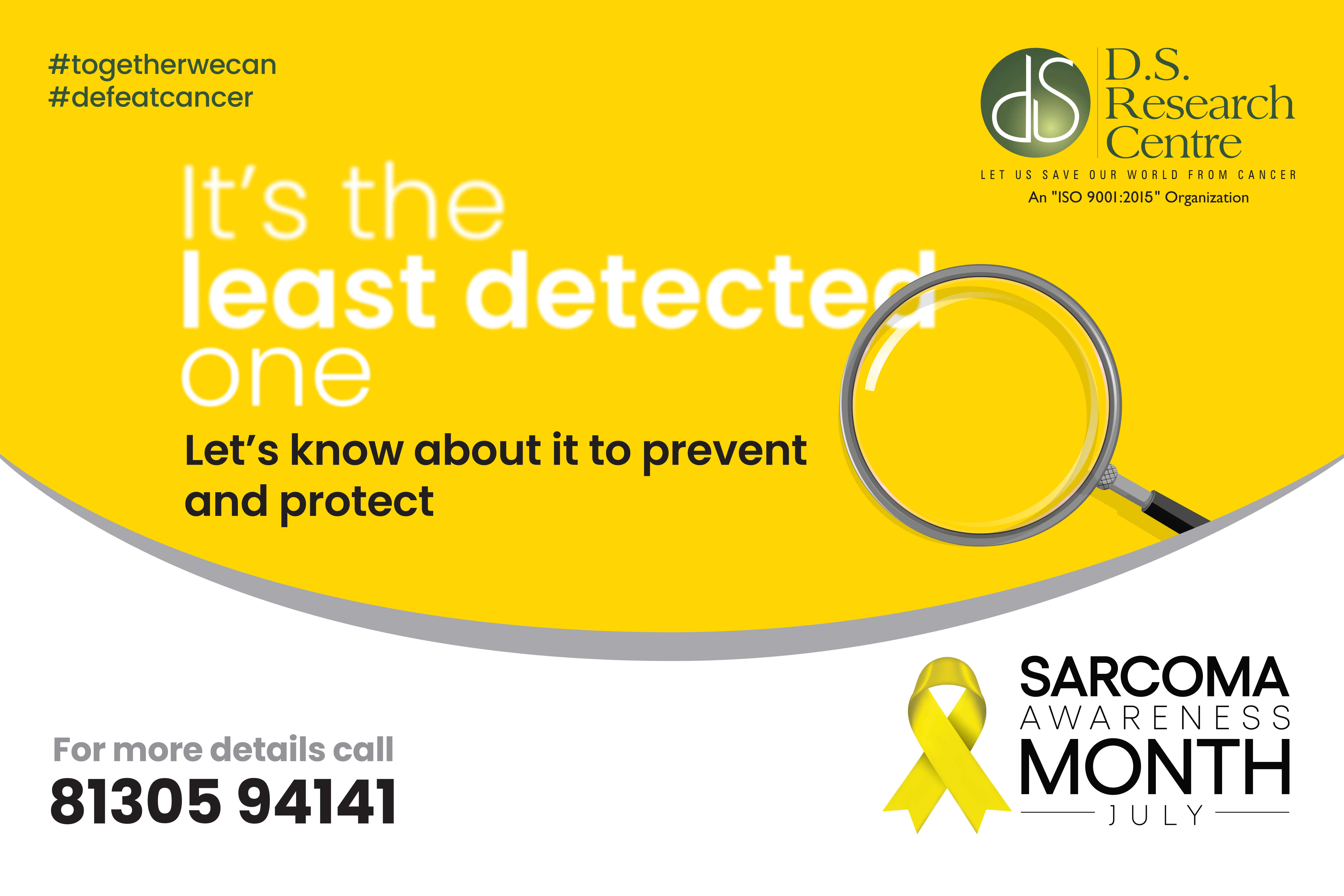The whole month of July is marked as
Sarcoma Awareness Month. This year 2023, the theme for sarcoma cancer awareness
month is “Let's talk about the Forgotten Cancer"
Definition
of Sarcoma:-
Sarcoma is a type of cancer that can occur
in various locations in body. Sarcoma is the general term for a broad group of
cancerous tumors that begin in the connective tissues (soft tissue sarcoma).
Mostly sarcomas are malignant.
It is rare in adults about 1% of Cancers
detected and makes nearly 15% of pediatric neoplasms. It can occur at any site:
–
1. Extremities 43%
2.
Visceral 19%
3.
Retroperitoneal 15%
4.
Thoracic 10%
5.
Other 13%
ETIOLOGICAL
FACTORS
Ø Radiation
exposure (osteosarcoma, angiosarcoma)
Ø Chronic
lymphedema
Ø Trauma
Ø Chemical
exposure e.g. Arsenic, polyvinyl chloride (hepatic angiosarcoma)
Ø Infections
e.g. Herpes Human Virus that causes Kaposi’s sarcoma in immunocompromized
patients
SIGNS
AND SYMPTOMS OF SARCOMA INCLUDE:
·
A lump that can be felt
through the skin that may or may not be painful
·
Bone pain
·
A broken bone that happens
unexpectedly, such as with a minor injury or no injury at all
·
Abdominal pain
·
Weight loss
TYPES
OF SARCOMA:-
Many types are named after the type of
cell, tissue, or structure involved, as in angiosarcoma, chondrosarcoma,
fibrosarcoma, liposarcoma and osteosarcoma.
TYPE OF SARCOMA
| TISSUES THEY ARE FORMED IN
|
Angiosarcoma
| Blood or lymph vessels
|
Ewing tumors
| Tumor of stem cells
|
Fibrosarcoma
| Fibroblasts (connective tissue)
|
Gastrointestinal stromal tumor (GIST)
| Specialized neuromuscular cells of the digestive tract
|
Liposarcoma
| Fat tissue
|
Leiomyosarcoma
| Smooth muscle
|
Kaposi sarcoma
| Blood vessels
|
Myxofibrosarcoma
| Connective tissue
|
Rhabdomyosarcoma
| Skeletal muscle
|
Neurofibrosarcoma
| nerve endings |
CLASSIFICATION
Ø Localized
- tumor is restricted to primary site of the body.
Ø Locally
advanced - the tumor involves or attaches to nearby tissues or organs.
Ø Metastatic
- the sarcoma has spread to parts of the body far away from where the sarcoma
started
STAGING
Ø Stage
I: The tumor is small and low grade (GX or G1).
Ø Stage
II: The tumor is small and high grade (G2 or G3).
Ø Stage
III: The tumor is larger and high grade (G2 or G3).
Ø Stage
IV: The cancer has spread to other parts of the body i.e. distant organs.
METHODS OF
DIAGNOSIS:-
ü Clinical
examination
ü Laboratory
studies: - Deranged biochemical reports.
ü Biopsy
:- Tissue examination
ü X-ray:- to look at lumps under the skin or
other organs in the body.
ü MRI
studies and radioisotope bone scans: - to determine soft tissue sarcoma size
& adjacent tissue involvement
ü Computed
tomography (CT) imaging: - to measure the tumor’s size
TREATMENT
Ø Surgery
Ø Radiotherapy
Ø Chemotherapy:-Cytotoxic
agent cyclophosphamide, Doxorubicin, Epirubicin, Ifosfamide, Gemcitabine,
Docetaxel etc are used.
Ø Targeted
therapy - It targets the cancer’s specific genes, proteins, or the tissue
environment that contributes to cancer growth and survival, usually works by
blocking the action of proteins in cells. This type of treatment blocks the
growth and spread of cancer cells and limits damage to healthy cells.
Ø Immunotherapy
also known as biologic therapy is designed to boost the body's natural defense
system to fight the cancer. It uses materials made either by the body or in a
laboratory to improve, target, or restore immune system function
SARCOMA
ACCORDING TO AYURVEDA:-
The
derivation of the word arbuda generally means the disease which spreads very
abruptly. Acharya Sushurta has described Arbuda as "The Doshas having
vitiated in any part of the body and afflicting the Mamsa, and produce a
swelling, which is circular, fixed, slightly painful, big in size, broad-based,
slowly growing and does not suppurate." As a basic rule of disease
pathogenesis in Ayurveda, vitiation of Doshas in body is the main cause of any
disease, which is applicable for Cancerous tumors as well.
Ayurveda
aims finding the root cause of disease & treating the same to prevent
recurrences, the steps followed in Ayurveda for disease treatment are:-
1.
Roganashini Chikitsa
2.
Prakrut Awastha Sthapan
Chikitsa i.e. Restoration of Normal Function of Body
3.
Rasayana Chikitsa i.e.
Rejuvenation Therapy
Incorporating
an Ayurvedic concept of diet and lifestyle (Ahaar & Vihaar) in conventional
treatment is very beneficial. Ayurvedic herbs and medicine such as Ashwagandha,
Pippali, Curcuma Longa, Vat, Draksha have antioxidant properties which aid in
cancer treatment and prevent the growth of malignant cells.








Posted on April 15, 2016
Posted on April 15, 2016